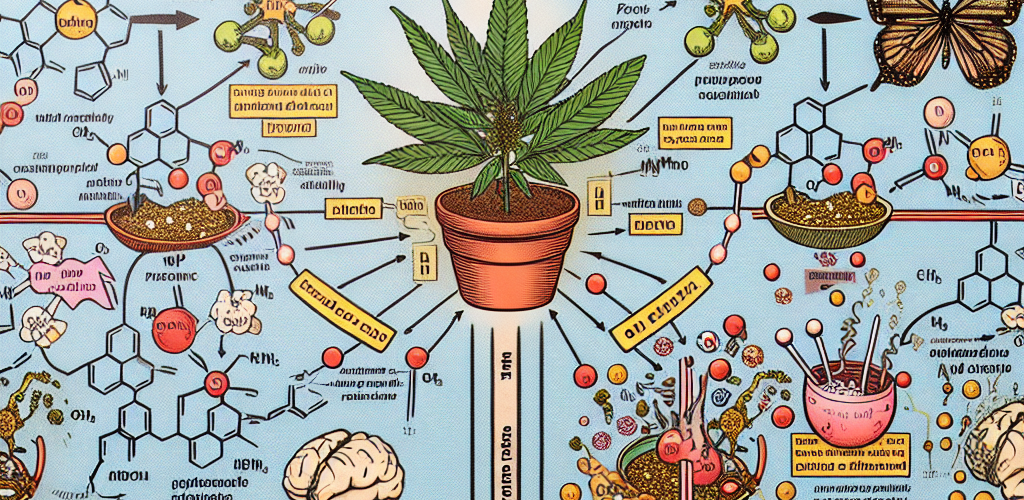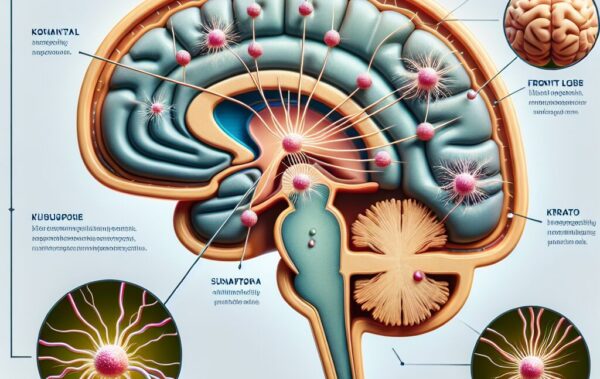- Overview of kratom alkaloids and their pharmacology
- Comparing kratom and opioids at the receptor level
- Kratom’s unique effects on the opioid system
- Potential benefits and risks of kratom use
- Frequently asked questions about kratom and opioids
Kratom, a tropical tree native to Southeast Asia, has captured the attention of the wellness and alternative medicine communities largely due to its alkaloids, the compounds responsible for its unique effects. The two most well-known of these alkaloids are mitragynine and 7-hydroxymitragynine, which have been identified as the primary psychoactive components of kratom. These substances interact with opioid receptors in the brain, but in a manner that is distinct from traditional opioids such as morphine and codeine.
The pharmacology of kratom alkaloids is complex, and researchers are still working to unravel the full scope of their activities in the body. Unlike opioids, which typically bind to and fully activate opioid receptors, kratom alkaloids are known as partial agonists at these receptors. This means they activate the opioid receptors, but to a lesser degree than full agonists. This partial activity might be responsible for the nuanced effects of kratom, as it presents a lower risk of certain side effects commonly associated with opioids, such as respiratory depression.
Additionally, kratom alkaloids engage with other receptor systems in the body, such as adrenergic, serotonergic, and dopaminergic receptors. This multi-receptor activity might further explain the differences in effects between kratom and traditional opioids, as the latter primarily target the opioid system. The diverse interplay of kratom alkaloids with these various receptors contributes to its multifaceted impact, including pain relief, euphoria, increased energy, and relaxation at different doses or strains.
When discussing strains, enthusiasts often refer to the vein colors of kratom leaves, which are believed to be indicative of the alkaloid profile and, subsequently, the effects. For example, the Red Vein kratom strains are often associated with pain relief and sedation, while White Vein strains are linked with increased alertness and energy. Green Vein strains are considered to have a balance of both stimulation and pain-relieving abilities.
In exploring the pharmacological differences between kratom and traditional opioids, researchers believe kratom’s risk profile may be lower in terms of addictive potential, though more research is necessary to fully understand its long-term effects and safety. This understanding could potentially lead to the development of new treatments that offer pain relief without the same high risk of dependence and addiction associated with conventional opioids.
- Mitragynine and 7-hydroxymitragynine are the key psychoactive alkaloids in kratom.
- Kratom alkaloids act as partial agonists at opioid receptors, potentially leading to fewer side effects.
- Kratom’s interaction with multiple receptor systems may result in a unique spectrum of effects.
- The perceived effects of kratom may vary based on the strain, with different strains having different alkaloid profiles.
While the current understanding of kratom alkaloids and their pharmacology points to an intriguing alternative to traditional opioids, it is essential to remember that efficacy and safety profiles are not yet fully established. As research continues, individuals interested in kratom should approach its use with caution and be aware of the varying legal statuses in different regions. It’s always recommended to start with lower dosages and remain informed about the latest scientific findings on kratom.
Comparing kratom and opioids at the receptor level
Kratom exhibits a fascinating and less aggressive approach to opioid receptor engagement compared to traditional opioids. To understand this relationship further, it is crucial to delve into the specific mechanisms that underlie how kratom interacts with opioid receptors in the brain and body. Unlike opioids, which have a high affinity to strongly bind and activate the mu-opioid receptors, kratom’s primary alkaloids, mitragynine and 7-hydroxymitragynine, approach these receptors differently.
Researchers have noted that mitragynine exerts its effect primarily as a partial agonist at the mu-opioid receptors, which doesn’t initiate the same strong reaction that opioids like heroin or oxycodone do. This difference could account for why users report experiencing pain relief from kratom without some of the severe side effects that are often noted with opioid use, such as significant respiratory depression. This distinction at the receptor level is key to understanding the unique properties of kratom and how it could potentially offer a safer alternative for managing pain and opioid withdrawal symptoms.
The beta-arrestin pathway is another important factor to consider when comparing the actions of kratom alkaloids and traditional opioids. Conventional opioids recruit beta-arrestins following receptor activation, which is associated with many of the negative side effects of opioids, including constipation, tolerance, and dependence. Kratom alkaloids, however, seem to induce less recruitment of beta-arrestins, which might explain why they appear to produce fewer adverse effects.
Here are some key differences in how kratom and traditional opioids interact with the opioid receptors:
- Kratom typically acts as a partial agonist primarily at the mu-opioid receptors, while traditional opioids are often full agonists.
- Kratom’s alkaloids may cause less activation of the beta-arrestin pathway, potentially reducing associated side effects.
- The interaction between kratom and opioid receptors tends to produce a less intense stimulation and can be associated with a lower risk of abuse and addiction.
Aside from the receptor-level details, it is vital for consumers to recognize that scientific inquiry into kratom is ongoing. Although kratom’s interaction with opioid receptors suggests a lower potential for abuse and respiratory depression, these effects have not been thoroughly studied in large-scale human trials. Thus, while intriguing, kratom’s profile should be met with careful consideration, and those using or interested in kratom should keep abreast of new research.
For instance, those exploring the consumption of kratom for its analgesic properties might choose to try various kratom forms such as kratom capsules, kratom extract powders, or even kratom tea bags for a more measured and potentially safer intake. It is also essential for users to source their products from reputable vendors to ensure quality and purity.
In sum, while kratom does interact with opioid receptors, the nature of this interaction is complex and distinct from traditional opioids. This gives it a different therapeutic profile that might be beneficial in some cases but also necessitates a careful and informed approach to its use.
Kratom’s unique effects on the opioid system
Kratom’s interaction with the opioid system is a central point of interest in the ongoing discussion about its potential as an alternative to traditional opioids. What sets kratom apart in terms of its interaction with opioid receptors is not only its role as a partial agonist but also the selective way in which it engages these receptors.
The unique effects that users reported from kratom might be attributed to the fact that kratom’s main alkaloids do not activate all the subtypes of opioid receptors in the same way that opioids do. Opioids typically bind to several opioid receptor types with a high affinity, leading to a comprehensive set of effects, both therapeutic and adverse. Kratom, however, predominantly interacts with the mu-opioid receptors and to a lesser extent with delta and kappa receptors. This selectivity is thought to enhance the therapeutic effects like analgesia, while minimizing the risk for dependence and other negative side effects that are often associated with opioids.
Moreover, the dosage of kratom plays a significant role in its effect on the opioid system. At lower doses, kratom tends to exhibit stimulating effects, while at higher doses, its sedative properties become more apparent. This dosage-dependent effect curve is quite different from that of traditional opioids, which usually increase in sedative and pain-relieving effects linearly with dosage increases, along with the risks of adverse side effects.
Further, the differences in kratom’s effects may also be due to the synergy between mitragynine and the multiple other alkaloids present in the kratom plant. Each alkaloid may interact with opioid receptors in slightly different ways, contributing to the overall effect profile of kratom while potentially offering a broader therapeutic window.
Here are several key points concerning the unique effects of kratom on the opioid system:
- Kratom’s primary alkaloids preferentially target mu-opioid receptors and exhibit less interaction with delta and kappa receptors, which could lead to fewer side effects.
- The effects of kratom are dosage-dependent, providing stimulation in low doses and sedation in high doses, differing from traditional opioids which typically increase sedation with dose escalation.
- The presence of multiple alkaloids in kratom might produce an entourage effect, enhancing its therapeutic potential and reducing risks compared to singular-compound opioids.
With a growing interest in the use of kratom for various conditions, consumers are exploring different consumption methods to manage dosage and effect. Some may prefer the convenience of kratom capsules for controlled intake, while others might opt for the traditional approach of kratom powder to tailor their experience more closely to their needs.
In understanding kratom’s unique effects on the opioid system, consumers and medical professionals alike recognize its potential as a tool for pain management and opioid dependency treatment, but also the need for caution and more comprehensive research. With an increasingly educated public and ongoing scientific studies, the future of kratom use could see more informed application and possibly, wider acceptance in therapies where it can be beneficial.
Potential benefits and risks of kratom use
 Exploring the potential benefits and risks of kratom use is essential for informed decision-making among users and healthcare providers alike. On one hand, anecdotal reports and preliminary studies suggest that kratom may offer significant therapeutic benefits, particularly in the realms of pain management and opioid withdrawal support. On the other hand, the widespread use of kratom has raised concerns regarding its safety profile, potential for abuse, and long-term health implications.
Exploring the potential benefits and risks of kratom use is essential for informed decision-making among users and healthcare providers alike. On one hand, anecdotal reports and preliminary studies suggest that kratom may offer significant therapeutic benefits, particularly in the realms of pain management and opioid withdrawal support. On the other hand, the widespread use of kratom has raised concerns regarding its safety profile, potential for abuse, and long-term health implications.
One of the notable potential benefits of kratom is its ability to relieve pain. Many users turn to kratom as an alternative to prescription opioids for the management of chronic pain. Given its action as a partial agonist at opioid receptors, kratom may produce analgesic effects with a lower likelihood of causing respiratory depression, a serious and sometimes fatal side effect associated with traditional opioid medications.
Kratom has also gained attention as a possible aid in opioid withdrawal. Some users report that kratom can mitigate withdrawal symptoms, making the detoxification process more manageable. This could be of particular importance in the context of the current opioid epidemic, as finding effective and accessible treatments for opioid dependency is a pressing public health concern.
Moreover, individuals looking to reduce fatigue frequently explore the stimulating effects provided by lower doses of kratom. Users often describe increased alertness, energy, and focus, which can be beneficial in overcoming the fatigue associated with various medical conditions or lifestyle factors.
Despite these reported benefits, the risks associated with kratom cannot be overlooked. The substance’s safety profile is not yet fully understood, and long-term use can lead to a number of concerning side effects. These include weight loss, insomnia, constipation, and the development of tolerance, wherein users may find themselves needing progressively larger doses to achieve the same effects.
The potential for addiction is another serious risk to consider. Although kratom is often cited as having a lower potential for addiction compared to traditional opioids, there is evidence suggesting that habitual use can lead to psychological and physiological dependency. Withdrawal symptoms similar to those of opioid withdrawal, such as irritability, mood swings, and physical discomfort, can occur in individuals who stop taking kratom after prolonged use.
Regulatory issues add another layer of complexity to kratom’s risk profile. The varying legal status of kratom across countries and even within states in the U.S. can make it difficult for users to ensure the purity and quality of the products they are consuming. The lack of standardization and quality control in the kratom market further complicates the ability to safely consume the substance.
For those considering kratom, whether for therapeutic applications or personal use, it is critical to weigh the potential benefits against the risks. Choosing reputable sources for purchasing kratom is one way to mitigate some of these risks. For example, those seeking quality-assured kratom products might consider exploring the range offered at a dedicated kratom shop that ensures all products meet specific standards.
Additionally, it’s important for users to consult with healthcare professionals and seek out educational resources to stay informed about the latest research findings related to kratom. Until more conclusive research is available, a cautious and well-informed approach to the use of kratom remains advisable.
Given the ongoing debates and emerging research, understanding the potential benefits and risks of kratom is a continually evolving process. As we work to learn more about this substance, it’s clear that kratom presents a complex intersection of possibilities and concerns that warrants careful consideration and respect for its potency.
Frequently asked questions about kratom and opioids
Frequently Asked Questions about Kratom and Opioids
The conversation around kratom and its impact on opioid receptors has spurred numerous questions from both the general public and the scientific community. With its increasing popularity, it’s crucial to address these queries to clarify the potential uses and concerns associated with kratom. Here, we’ll present some of the most frequently asked questions and provide comprehensive answers grounded in the current understanding of this botanical.
Q: How does kratom work in the body compared to traditional opioids?
A: Kratom contains alkaloids that act as partial agonists at the mu-opioid receptors, which means they do not activate these receptors to the same extent as full agonists like many traditional opioids. This difference might result in kratom providing pain relief without the same level or risk of side effects such as respiratory depression and constipation that opioids commonly induce.
Q: Can kratom be used to treat opioid addiction or ease withdrawal symptoms?
A: Some individuals utilize kratom to alleviate opioid withdrawal symptoms due to its action on opioid receptors. However, the extent of its effectiveness and safety for this purpose is not yet fully understood or medically approved. Current data mainly comes from anecdotal reports, and further clinical research is needed to establish kratom as a legitimate treatment option.
Q: Is kratom legal, and can I use it in place of my prescription pain medication?
A: Kratom’s legal status varies by country and within states in the U.S. It is important to check the local regulations in your area before purchasing or using kratom. As for replacing prescription medication, you should never alter or discontinue prescribed treatment without consulting a healthcare provider. Kratom is not approved by the FDA for medical use, and should not be considered a direct substitute for prescribed therapies.
Q: How do the side effects of kratom compare to those of traditional opioids?
A: Kratom can cause side effects such as nausea, constipation, sleep issues, and potential dependency, similar to opioids, though often reported to be less severe. However, there’s a lack of comprehensive clinical studies to definitively compare the extent of side effects produced by kratom in contrast to opioids.
Q: Can kratom overdoses occur, similar to opioid overdoses?
A: While kratom appears to have a lower risk of respiratory depression compared to opioids, which is the leading cause of opioid overdose deaths, the risk of overdose still exists. High doses of kratom can lead to severe adverse reactions, and when mixed with other substances, the risk is compounded. Caution and responsible use are imperative.
Q: Where can I find reliable information about kratom’s effects?
A: If you’re looking for comprehensive and reputable sources on kratom, you can start by exploring educational articles on platforms like Kratom.Markets, and continue your research through scientific literature and discussions with healthcare professionals who are knowledgeable in this area.
Keep in mind that while we strive to provide up-to-date and accurate information, the landscape of kratom research is continually evolving. Always ensure you are reading recent materials and engaging with trusted sources in this field.
By answering these frequently asked questions, we hope to foster a clearer understanding of the differences between kratom and traditional opioids, as well as highlight important considerations regarding the use and potential benefits and risks of kratom. Remember to consult healthcare professionals and to approach kratom use with both curiosity and caution.









